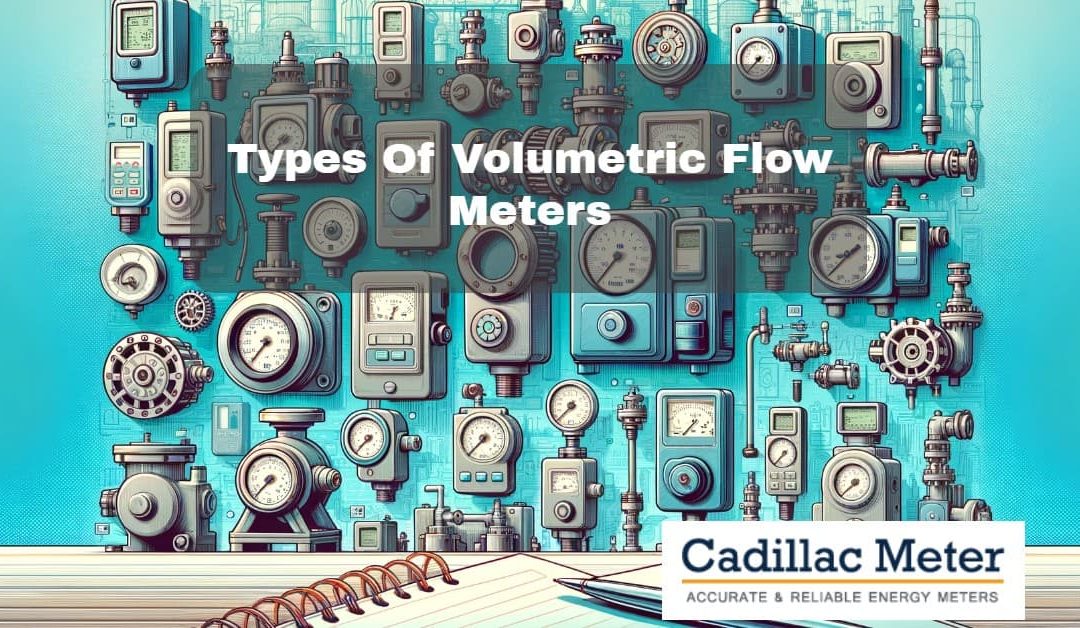Flow meters measure the amount of liquid, gas or vapor passing through a piping system. Most flow meters are designed to measure the velocity, or speed at which the fluid flows through a pipe. They use that information along with the pipe’s inner cross sectional area to calculate volume, or the amount of fluid passing through the system during a given time period (i.e. 50 gallons per minute). These flow meters can be characterized as Volumetric.
Flow meters are often composed of a primary element, transducer and transmitter. The transducer senses the fluid passing through the primary element, allowing the transmitter to generate a usable flow signal. These three components are frequently combined, so the actual flow meter may be more than one physical device.
Ultrasonic
There are two types of ultrasonic flow meters, each using sound waves to measure the velocity of fluid moving through a piping system. “Transit time” meters send and receive ultrasonic waves between transducers in upstream and downstream directions. The difference in the time it takes the wave to travel upstream versus downstream is directly proportional to the velocity of the flow. Transit time meters are best used for clean, non-aerated fluids. The other type of ultrasonic flow meter, the “Doppler,” measures the frequency of sounds waves as they bounce off of particles or air bubbles in the flow stream. As flow is increased, the shift in frequency is proportional to particle velocity. This type of meter is obviously better suited for aerated or dirty fluid applications.
Vortex
Vortex flow meters use a bluff body, or shedder bar to interrupt flow. As the fluid passes the body, vortices, or swirls are created downstream in an alternating pattern similar to the way a flag flaps in the wind. A transducer (piezoelctric crystal, pressure sensor, ultrasonic sensor) is used to sense the vortices, and the frequency of those vortices is relative to the velocity of flow. Applications which are common for vortex flow meters include water, wastewater, steam, pulp and paper, chemicals, and petrochemicals
Magnetic
Magnetic flow meters measure fluid velocity using Faraday’s Law of Electromagnetic Induction. In this case, a magnetic field is channeled into a conductive liquid flowing through a pipe. When the ions in the liquid pass through the magnetic field they cause a voltage signal that is sensed by electrodes placed on the pipe walls. According to Faraday’s Law, the voltage produced is proportional to the velocity of the flowing liquid. Magnetic flow meters are designed to be applied to systems moving conductive fluids such as water, acids, caustic, and slurries.
Turbine
Turbine flow meters measure velocity by using a fluid’s kinetic energy to rotate a submerged turbine, similar to the way wind moves a pinwheel. When the fluid moves faster, the turbine rotates proportionally faster. Rotation can be sensed in the shaft of the turbine mechanically, or by detection of blade movement. A sensor can be located on the outside of the pipe and detect a pulse with the passing of each turbine blade. When the fluid moves faster, more pulses are detected, allowing the meter to determine velocity. Volumetric flow meters are well suited for hydrocarbon, chemical, water, cryogenic liquids, air, and industrial gas applications.
Paddle Wheel
Paddle wheel technology is a lot like that of the turbine flow meter, in that the flow causes the wheel to rotate at a rate that is proportional to velocity. The difference in these two technologies lies in the paddle wheel’s ability to measure flow at lower rates. Essentially, paddle wheels are more of a flow indicator rather than providing highly accurate measurements. Paddle wheels are limited both in operating pressure and temperature, and are best used with liquids that are clean and do not contain particulates.
For more information about volumetric flow meters, and advice about use with your specific application, contact Cadillac Meter today at (888) 556-3913.



